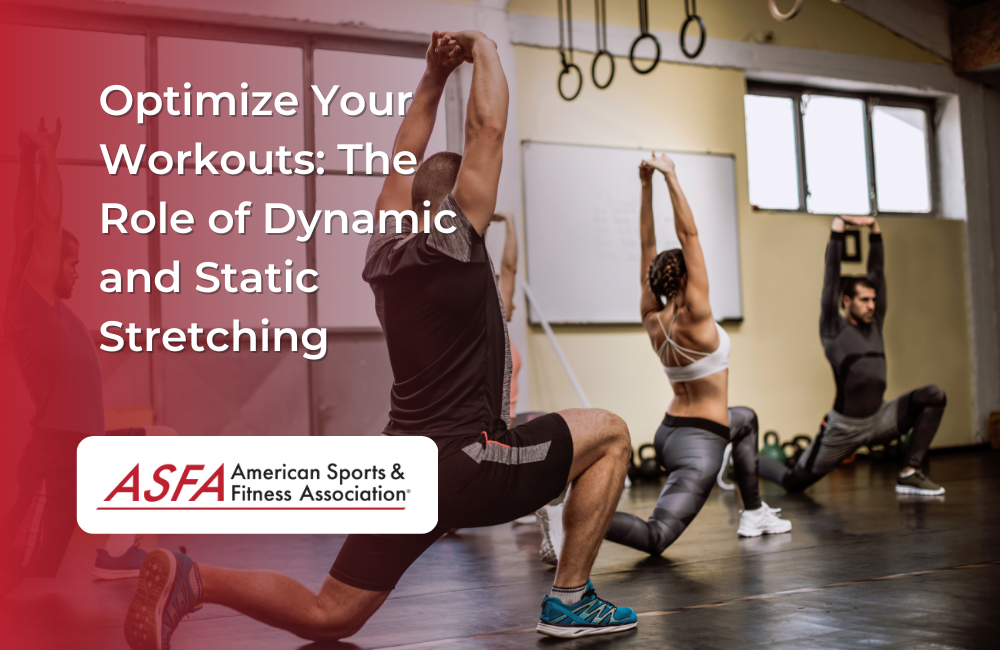Stretching is a key component of any workout. The right mix of dynamic and static stretching can be beneficial to your workout routine. Dynamic stretches are often overlooked by gym goers, but they help improve power output, muscle flexibility, strength and rehabilitation—all important elements for working out effectively.
Stretching is a key component of any workout
Stretching is a key component of any workout. It increases the range of motion, reduces soreness, and can help prevent injury. Stretching also allows you to relax before your workout and focus on how you feel during it.
Stretching is an excellent way to warm up before exercising or playing sports because it warms up the muscles and joints in preparation for activity. Muscles that are warmed up will perform better than those that aren't warmed up; therefore, stretching helps improve athletic performance by increasing muscle flexibility while decreasing the risk of injury during physical activities like running or weightlifting. Stretching also improves recovery time after workouts by easing tightness in the muscles caused by increased blood flow throughout the body due to exercise.
Static stretching is when you hold a position for 20 to 30 seconds. This is the type of stretching that most people think of when they hear the word "stretching." Here are some examples:
- Hold your arms straight out in front of you and then raise them over your head until they're parallel to the floor. Hold this position for 20 to 30 seconds, then lower them back down again slowly. Repeat three times on each side (total of six stretches).
- Stand with feet shoulder-width apart and inhale deeply as you lift one foot off the ground by raising it behind you until it's about six inches off the floor. Then exhale as slowly lower that foot back down onto its original position on top of its mate so that both are flat against each other again; repeat with the other leg once finished with the first one (two total). Do these several times through if time allows or until desired muscle fatigue occurs--but don't go too far beyond this point; otherwise injury could occur!
Benefits and Techniques of Dynamic Stretching for Optimal Workout Performance
Dynamic stretching involves moving the body through specific patterns and ranges of motion. This type of stretching is generally performed slowly, through a full range of motion, and in a smooth and controlled manner. Dynamic stretches are not held for long periods of time; they're best used as part of a warm-up routine before beginning your workout or activity.
Dynamic stretches can be done before or after static stretches (as part of an overall warm-up), but they shouldn't be used as substitutes for static stretching because they won't improve flexibility by themselves
Dynamic stretching is a form of active stretching, which means that you're moving your body through space as you stretch. When you do dynamic stretches, help improve power output, muscle flexibility, and strength by increasing blood flow to the muscles.
Dynamic stretching should be done at least five minutes before working out or playing sports to prepare your body for activity. Dynamic stretches also help improve rehabilitation after injury because they increase the range of motion in certain areas without overstretching them (which could lead to injury).
There are several different types of dynamic stretches including walking lunges; high knees; butt kicks; standing trunk rotations; straight leg marching and more!
Dynamic stretching can help improve power output, muscle flexibility, strength, and rehabilitation.
Dynamic stretching is performed by moving the limbs through their full range of motion at a controlled speed. This type of stretching should be done with light weights or no weight at all so that you don't compromise your form by relying on them for support (if you do use weights, make sure they are light enough that they don't affect your range of motion). Dynamic stretching exercises include lunges and squats with bicep curls or bench presses thrown in for good measure! Dynamic stretches like these will improve overall mobility as well as reduce muscle soreness and tightness by increasing overall blood flow throughout the body when combined with other types of warm-ups such as static stretching before or after working out - which we'll get into next week!
Conclusion
We hope that this article has given you some insight into the benefits of dynamic stretching. Whether you're looking to improve your performance in the gym or simply want to feel better, we think it's worth giving it a try.





